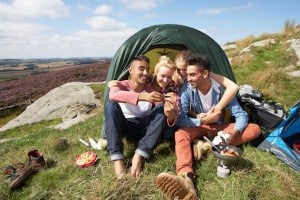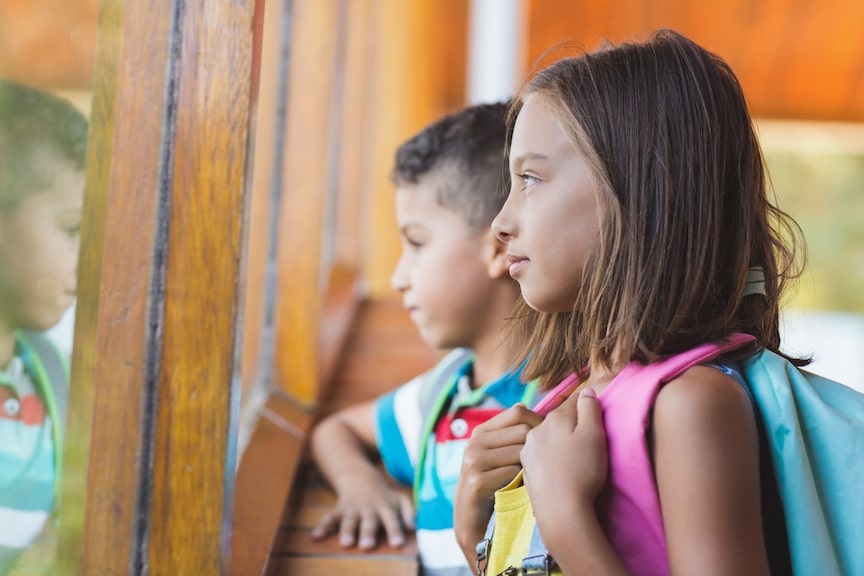Summer Vacation: When the Real Education Begins
Outdoor Education ResearchThe final bell has rung and children at public and private schools across the nation have cleaned out their lockers and headed out the doors and hopefully, outdoors.
Some of these children are departing schools that rarely allow their students to get down and dirty in the outside world — such as Polaris Charter Academy on Chicago’s West Side, where the school’s 450 students had been kept indoors due to fears associated with gun violence. In other parts of the country, fewer students get the opportunity to truly explore the world outside the playground or even lie down in the grass and point out the significance of cloud formations above.
These same schools, for a variety of reasons, don’t take the time to schedule impromptu short excursions to neighboring parks and wilderness areas, teaching students the names of native birds, plants and trees, pointing out urban and suburban wildlife, or following a slow-moving creek to a larger, more rapid tributary.
But just because most schools don’t fill that obligation doesn’t mean families can’t take over the job now that summer has arrived. The objective is to send these kids back to school in the fall — freshly cleaned up and rested — with heads full of new connections to the natural world.
So how do our children and students truly benefit from outdoor and adventure education? Here’s a short list of the positive attributes of wilderness exploration: (more…)
The Early-Camper Gets the Worm, According to Wilderness Study
Outdoor Education ResearchIt’s common knowledge that hanging around the outdoors, whether that be running bases on the baseball field or trekking in the backcountry — is nothing less than beneficial for you. There’s all that fresh air, exercise, a release from the stresses of everyday life — we could go on infinitum.
So now we have a new study that has scientists telling us there are additional pluses to participating in the wilderness-based activities, and these bennies can result in former sleepy heads who can’t seem to get up in the morning finding themselves leaping out of bed with a spring in their step and a song in their hearts.
According to a recent article in Current Biology, it appears that a large, consistent concentration of florescent lights in schools and the workplace, reading lamps at home, stadium floods and other artificial illumination sources, can really screw up your sleep pattern. And that doesn’t even account for the screen glow from computers, tablets and smartphones.
The study — albeit a small one — claims that an overabundance of artificial light at the wrong time can change sleep patterns and make us grumpy and sluggish in the mornings.
But a week in the wild, these scientists assert, synchronizes the body’s clock to become more attuned to the Sun and natural light sources, such as a candle or a campfire. In fact, sleep researchers maintain that by taking away artificial light, former night owls and other party animals who have a rough time hitting the deck in the morning, find themselves up and at ’em bright and early with more energy than ever before.
Kenneth P. Wright Jr., Ph.D., of the Department of Integrative Physiology at the University of Colorado in Boulder, says the brain’s “clock” lets us know when it’s time to hit the rack. However, unlike an alarm clock, this so-called circadian clock can be affected by artificial light sources, keeping you awake later at night and making it more difficult to get up in the morning.
Wright says that (more…)
New Research Focuses on The Impact of Face Time Versus Screen Time
Outdoor Education News
According to research we’ve recently discovered, children ages 8–18 now spend seven-and-a-half hours a day, seven days a week, using screens outside of the classroom. Those ages 12–17 use their phones to text message on a daily basis more than any other form of communication, including face-to-face interactions with peers, parents and others in their community.
And the trend is only growing. In the last two years alone, teen use of screens (think smartphones, tablets, laptops, etc.) has increased five-fold. For an organization like The National Center for Outdoor & Adventure Education, these findings present both challenges and opportunities.
When grade schoolers and teens enroll in our adventure-based, outdoor education-focused backcountry courses, we inform them ahead of time that tablets and phones are not approved for use during backcountry travel. On the opportunity side of that equation, we find the same outcomes that researchers from UCLA recently did when they conducted an experiment that examined whether increasing opportunities for face-to-face interaction during an outdoor education program — while eliminating the use of screen-based media and communication tools — improved nonverbal emotion–cue recognition in preteens.
From a write up in The Wall Street Journal:
Researchers at the University of California, Los Angeles, wondered if all screen time might be affecting children’s ability to read emotions in others. To find out, they took advantage of a rustic science-education program, 70 miles east of L.A., which doesn’t permit students to use electronic devices. (more…)
TALK TO US
Have any further questions about our courses, what you’ll learn, or what else to expect? Contact us, we’re here to help!
